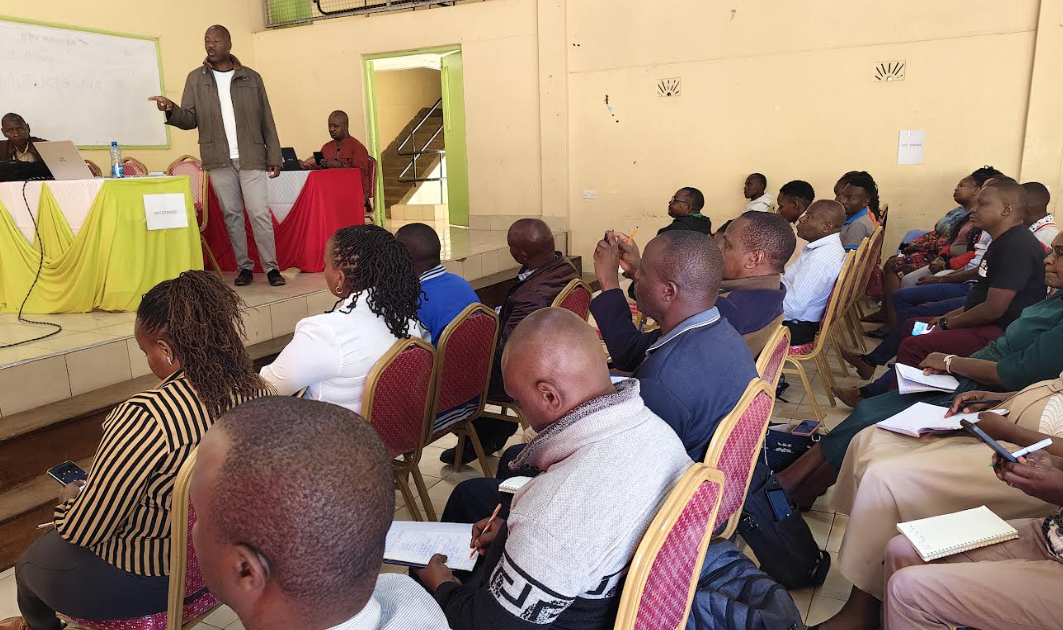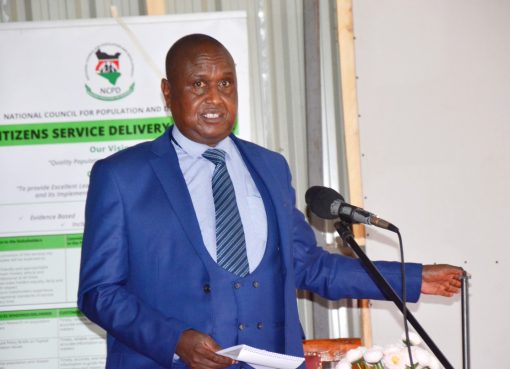The Kenya Agricultural and Livestock Research Organisation (KALRO), in collaboration with county governments, is working to develop digital soil fertility maps under a project funded by the World Bank.
In the project, more than 77,000 soil samples will be collected from 45 counties, excluding Nairobi and Mombasa, with the aim of testing the quality of soils that will inform types of interventions targeting to increase food production.
Deputy Director of the KALRO Horticulture Research Institute (HRI), Dr. Daniel Gikaara, said the project dubbed the National Agricultural Value Chain Development Project (NAVCDP) commenced in 2024 and will run till 2027.
The project, Gikaara said, will create digital soil nutrient maps in the country based on different soil attributes like pH that will aid in policy decisions and give specific recommendations to farmers under different agricultural value chains nationwide.
The director who spoke during the training of agripreneurs recruited to champion the project in Murang’a County at Murang’a University on Friday underscored the need for soil testing, saying overuse of fertilisers, among other farm chemicals, has depleted soil nutrients.
He said farmers usually use fertilisers without knowledge of the type of fertiliser to use on their farms, which should be guided by the results of soil sampling.
“In the project and assisted by the county governments, we have recruited agripreneurs in every ward who will be on the ground to collect soil samples and take them for testing at KALRO laboratories.
The agripreneurs will also be on the ground to advise farmers on what types of crops to plant in their farms and inputs to use based on the soil samples collected and analysed and soil maps created.” explained Gikaara.
He added that the agripreneurs will use mobile phone apps to aid in collecting the soil samples and mapping the areas where the soils have been collected.
“The agripreneurs will be trained on two applications, Maps. Me and KOBO Collect, which they will use to navigate the specific soil sampling points and input data on those soil testing sites.” He remarked.
The project, Gikaara noted, seeks to procure 12 Mid Infra-Red (MIR) machines, which will be placed strategically all over the country at KALRO Centres.
He observed that the machines will significantly reduce the challenge of getting samples analysed and also reduce the waiting time.
“The machines will analyse all the soil attributes and give predictions and recommendations on what can be planted in that particular soil type. These machines will further bring down the cost of sample analysis across the country.” He added.
In the past, soil mapping was done using a mechanism known as near-infrared technology, which used to give varying results due to a small database of soils collected in the country.
“Approximately 77,969 soil samples will be collected countrywide after the training from various locations and analysed to create a national soil spectral library. This will make it easier for people to get back results from labs on soil samples and create uniformity of results across the country.” Remarked the Deputy Director.
With the procurement of new modern machines, Gikaara said results of soil testing will be out between two and four days.
“Currently, the waiting time for getting results from laboratories is approximately 2 weeks. This project aims to reduce this time to approximately 2-4 days.” He stated.
He further noted that digital registration of farmers will also be done across the country with phone numbers, and once samples are collected, farmers will get the results of their samples directly on their mobile phones through the use of SMSs.
The County Director of Agriculture, Peter Muchiri, underscored the project, saying it will lead to increased food production.
He said from the testing they have done previously, many soils are acidic and lack nutrients crucial for healthy crops.
“Despite Murang’a being an agricultural county, many farms produce meagre yields due to depleted soil nutrients. Farmers still use traditional methods of farming, but this project will guide and support the types of crops to be planted in various parts of the county and inputs to be used,” added Muchiri.
By Bernard Munyao and Anita Omwenga




